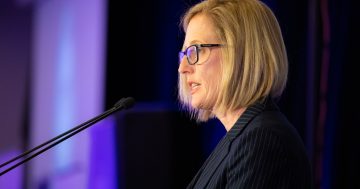
The NBN is slated to come to another 10 Canberra suburbs, but most will not be able to access plans until next year. Photo: File.
The slow rollout of the NBN across the nation’s capital could influence where businesses decide to set up shop, neglecting areas like Belconnen in favour of suburbs already attached to the network, ACT Business Minister Tara Cheyne said.
Ms Cheyne made the comments as the Commonwealth Government announced it would be spending $1.2 billion on a digital economy strategy, the finer details of which will be revealed in next Tuesday’s budget (11 May).
She welcomed the announcement and what it would mean for businesses in Canberra, but said she would like to see the NBN achieve the goals that were announced over a decade ago.
“Where different businesses haven’t had the strong coverage they were promised, they have had to find other solutions, whether they go with different providers or go to 4G and 5G rather than going to NBN,” she said.
“There are plenty of suburbs in Belconnen that are still delayed or do not have good internet speeds, so I would love to see it expanded.”
Ten Canberra suburbs and neighbouring Jerrabomberra were added to the NBN’s rollout list this week. However, the first eligible premises will only be able to access the service in March 2022 as part of a “small-scale launch”.
The suburbs of Banks, Campbell, Conder, Dickson, Gordon, Hume, Lyneham, O’Connor, Reid and Turner were selected due to anticipated demand and its impact on economic activity in the area.
According to iinet’s NBN map, the NBN is currently available in just over a quarter of Canberra – 35 of 137 Canberra suburbs.
CEO of the Academy of Interactive Entertainment (AIE) John De Margheriti said that while he moved houses to access the NBN, the Australia-wide network itself was not fast enough for higher-end projects.

Business Minister Tara Cheyne said many suburbs in her own electorate do not have access to the NBN. Photo: Dominic Giannini.
While he was critical of the government’s internet infrastructure, he said the new digital economy strategy would be a gamechanger for the gaming industry.
The strategy includes tax offsets for game developers and more than $100 million for digital cadetships to help workers build digital and technology-based skills, and $15 million to help businesses take up e-invoicing.
Mr De Margheriti said the 30 per cent offset would allow Australia to catch up with the rest of the world and see gaming development jobs soar.
“Australia, for the first time, is at play and competitive with the rest of the world,” he said.
President of the Gungahlin Community Council Peter Elford also welcomed the announcement, saying that businesses understanding the digital environment and cyber-literacy can be more important than the physical infrastructure.
Mr Elford said businesses in the Gungahlin area are generally well served by the NBN, receiving the faster fibre to the premises under Labor’s initial rollout before the Coalition pivoted to fibre to the node when it came to power in 2013.
He added that equity of access and consistency of the network across Canberra was essential for businesses to thrive in today’s digital economy.
“You do not want a situation where someone has the knowledge and expertise and is ready to go but is hamstrung by not having adequate infrastructure,” he said.
Alicia Payne, the Federal Member for the electorate of Canberra, said she wanted the digital economy strategy to succeed but was sceptical about the government’s ability to roll it out.
“The government’s track record with big tech projects isn’t crash hot, with notable failures such as the My Health Record, robodebt and the NBN to name a few,” she said.
“I hope the Morrison Government can do this digital transformation properly and avoid similar technology disasters such as the NBN rollout.”
Ms Payne said Canberra had the worst NBN of any capital city. She questioned why the ACT was left out of the first round of locations to be upgraded when they were announced in October 2020.
The importance of fast internet was highlighted during the pandemic when businesses, families and students pivoted to work from home, and it needs to be expedited as people continue to work remotely, she said.


















